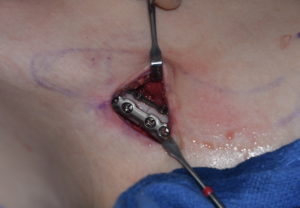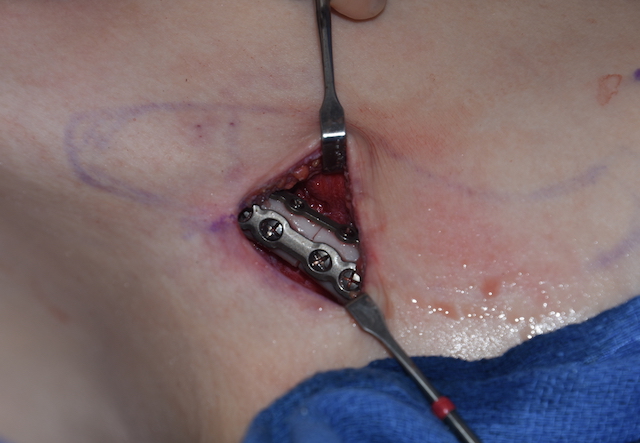
- Because of the bilateral nature of the procedure and the immediate limitations of use of both arms, one is going to need substantial help after surgery. Plan for this accordingly in the first week after surgery.
- Most patients will need some narcotic pain medication after surgery. You will be given a pain prescription prior to surgery with instructions for its use.
- The application of ice over the taped inner shoulder incisions is helpful for swelling and pain control after surgery and is of most benefit for the first two days after surgery. The best way to do so is to use a large ice pack (like a ziplock bag of ice or a bag of frozen peas/corn) Apply it for 15 minutes every hour when awake if possible.
- Your inner shoulder incisions will be covered with tapes that are glued on. That is your only wound dressing. All sutures are under the skin and will not need to be removed. The tapes will stay on for at least 7 to 10 days after surgery. They can be removed when their edges start to get loose and curl up…which may be as long as two weeks after surgery and sometimes longer. It is OK to get the tapes wet when showering as that is one of the reasons they are there.
- You will be in a sling for both arms when you come out of surgery. Keep your sling on. It both protects the incision as well as the osteotomy site from too much shoulder motion as it is healing. Its purpose is to keep the elbow forward and in front of the plane of the body to prevent stress on the collarbone healing site. The only time you can remove your slings is to shower and when performing physical therapy.
- When showering the slings can be removed but keep your arms across your chest.
- When sitting or sleeping have a pillow underneath your elbows as that will prevent the elbows from sliding backwards.
- While sitting in a chair you may remove the sling three times a day to perform wrist and elbow range of motion exercises.
- Many patients have difficulty with sleeping after collarbone surgery. Sleeping in an upright position (e.g., reclining chair) is what is optimally comfortable for most patients. Do NOT for 6 to 8 weeks after surgery attempt to sleep on your side. That places considerable stress on the osteotomy/plate fixation site and can result in plate or bone fracture.
- In the first three weeks after surgery do not take raise your arms above 45 degrees in any direction or attempt to lift more than 5 lbs.
- It will be become obvious after surgery that with the elbows held in position at one’s side and in front of the body, the arm and hands below the elbow have good range of motion. (90 degrees forearm movement towards the face and away from the body) This will be very useful and is a bit like functioning with shortened arms. (dinosaur arms) Limiting for sure but functional for some aspects of personal care and eating.
Dr. Barry Eppley
Indianapolis, Indiana



